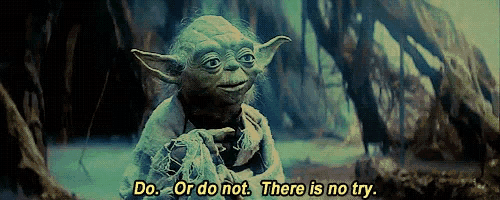The art of surrendering in modern life
A guide to finding balance between ambition and acceptance, releasing control, trusting life's flow, and achieving greater ease and clarity
Before we dive into this guide, I wanted to say a quick welcome (beyond my welcome email) to all my new subscribers. I recently had a bit of a growth spurt and it was really encouraging. I try to embrace this idea of surrendering with this publication, but it’s certainly great wind in the sails to see more and more people find my writing interesting and - hopefully - useful!
It really helps me keep writing and, if you like this, please do share it as well with others, like and comment on the post, and subscribe if you’re not already subscribed.
Some of my readers already know this and some have no idea, because I haven’t written about this anywhere before, that I recently made a decision to take an extended break from the work I was doing. I won’t go into the specifics here, but it was a big deal and a decision that I did not make lightly and it did not come easy.
It’s been about 6 weeks now and although I have a lot of family, friends and mentors to thank for incredible support, encouragement and advice in making the decision I made, ultimately it was up to me to deal with - in particular - the psychological consequences of it.
So far, I’m very happy to have made my choice, and recently I began reflecting on how dealing with the liminal space of not having a very specific and structured thing (e.g. job, relationship, school, etc.) to anchor your identity to can be like walking a high rope with a balancing pole.
If you fall, on one side there is the feeling that you’re not doing enough - and you will suffer and fade into an abyss of obscurity, irrelevance and failure. On the other side is the feeling that you’re doing too much - and you may waste away the opportunity to really listen to your deep inner voice and follow where your soul really wants to take you.
It occurred to me though - largely through a chance philosophical conversation with a friend - that the best balancing pole on this particular high rope is surrender. And practicing the art of surrendering is what would allow me to put one step in front of another, keep moving forward, and stay on this higher vantage point where there is a perspective that very few people get the benefit of.
So, what do I mean by this concept of surrender?
Surrender is subtle. It begins when you stop fighting what is—when you realise that, despite all your plans, life moves to a rhythm beyond your control. We’ve all felt it: that tension in the chest, the tightening grip as you try to hold everything in place. You push, pull, and strain to make life bend to your will. Sometimes it works. But more often, you end up exhausted, wondering why nothing feels right.
This was where I found myself a few months ago, until I knew I had to get out of this situation, take a higher vantage point, and figure out how to practice a bit of surrendering.
At first, it felt like letting go of a rope I wanted to climb that I had been holding onto for too long. Very tightly. My hands were raw from the pull. I had been pulling hard—maybe too hard—and still, I hadn’t been able to move much.
So, one day, I decided to stop pulling on that rope. I loosened my grip. And at that moment, something unexpected happened. The tension released. And I realised that, despite my fears, it didn’t feel like I had failed or given up. I had just stopped fighting.
Life doesn’t ask you to give up your strength.
But it does ask you to stop resisting its flow.
Think about standing in a river. The water is powerful, always moving, whether you’re ready or not. You can fight it. Swim against the current. Struggle. Or, you can turn around and let the river carry you. You’ll still have to navigate—there will be rocks, and the current won’t always take you where you thought you’d go.
But you’re moving now.
Without the fight.
This is the essence of surrender.
For most of us, control feels like security. We plan, we push, we strategise—believing that if we do everything right, life will deliver the outcome we want. But here’s the truth: even with all your effort, there’s always an element that’s out of your hands.
And deep down, you already know this. That’s what creates the fear. The tighter you hold on, the more uncertain everything becomes.
Surrender, on the other hand, frees you. It’s a quiet power—one that doesn’t come from knowing all the answers but from trusting that you’ll be okay without them. You still act. You still make choices. But you’re no longer trying to control every twist and turn. You’re allowing life to move, knowing that it’s not all on your shoulders.
It has certainly helped me a lot in this way, and whilst I don’t consider myself an enlightened being eternally freed from all fears and worries, it has been excellent to keep returning to and finding some peace and equanimity in it.
And that’s what I wish for you too. Peace and equanimity. And breath.
That said, I have a confession.
Earlier I said that I loosened my grip on the rope and in a moment something unexpected happened. That was a bit of a lie. Surrendering doesn’t really happen in a moment. And you don’t feel its benefits in a moment either.
In fact, surrender isn’t something you can even understand overnight. It’s something you experience when you finally let go. But you do have to first commit to trying it out.
For now, you might be wondering…
I get the concept but how do I reconcile it with the responsibilities of a day to day life that requires making decisions?
Surrender happens in the quiet spaces, in the small moments where you choose to stop forcing. It's not a dramatic declaration of giving up on your responsibilities or making decisions; it's merely an easing of the grip. You feel it when you stop checking your phone for the message that hasn’t come or let go of the argument replaying in your mind.
It’s subtle but powerful.
Every day, you make choices. You move toward your goals. But there’s a shift when you stop wrestling with what the future should be and begin trusting in what is. The more you push to control every detail, the more elusive things become.
When you stop forcing, you notice something interesting: things start to flow again.
This isn’t about abandoning responsibility. Life still demands you show up, make decisions, and act. But surrender is about how you do it. It's the difference between gripping the steering wheel in fear and driving with ease. You’re still at the wheel, but you’re not trying to control every turn or bump in the road.
You can also think of it like planting a seed. You can water it, give it sunlight, nurture it. But the growth? That's not yours to command.
At some point, you have to trust the process and let nature take its course.
In the fast pace of modern life, surrender feels counterintuitive. You’re told to work harder, push faster. You have responsibilities and decisions to make, damnit. Surrendering is not compatible with ‘taking care of business’ or even just surviving the daily hustle and grind of life where if you slow down, pause or - god forbid - stop, you’ll surely crash and burn.
But this comes from a belief that surrendering means passivity and doing nothing. That’s not the case. True surrender is a shift in perspective. You still show up, but you leave room for life to show up, too.
You now might be thinking…
How can I let go and still stay in control of my life?
The truth is, you can do both.
Surrender doesn’t mean sitting on the sidelines. It means engaging fully in life, making choices, and moving forward, while understanding that not everything depends on you. You make the best decision you can, and then you trust the process. The fear of getting it wrong loses its grip because you’ve released the need to control the outcome.
Imagine you’re steering a boat. You set your direction, adjust the sails. But the wind? It decides how fast you’ll go, or if you need to shift course. Surrender is recognising that while you navigate, the forces around you shape the journey in ways you can’t predict.
You don’t stop steering—you just stop fighting the elements.
In practical terms, this means making decisions without being consumed by what happens next. You don’t waste energy resisting what you can’t change. If the winds shift, you adapt. It’s that simple.
This kind of surrender doesn’t weaken your position. It strengthens it. You move more freely, with less fear. Less scarcity. You’re not weighed down by the pressure of needing everything to go exactly as planned, with a sense of time running out.
And when things don’t go as expected?
You adjust.
You flow.
You keep going.
Why should I trust that things will unfold as they should, especially when life is painful?
That’s a fair question, my friend. Life can be tough.
Life can sometimes (like my last 10 months!) feel like a series of storms. And in those phases, when life gets hard—truly hard—trusting the process can feel impossible. Whether it’s the pain of personal loss or witnessing the suffering of others on a global scale, surrendering feels distant. Maybe even an insensitive, offensive suggestion.
After World War II, entire nations lay in ruins. Cities were devastated, millions lost their lives. Yet, in the years that followed, Europe rebuilt. The world saw the birth of the United Nations, an attempt to create lasting peace and cooperation.
Something new emerged from the ashes.
The surrender here wasn’t about accepting the destruction as a good thing, but about accepting that the world had changed, and the only way forward was through rebuilding, step by step. Surrender was the first step in that recovery.
You might be thinking at this point, “Well that’s not surrendering at all. There was a lot of active effort, strategy, purposeful action in the face of the atrocities that led to the war ending. And then a lot of action that resulted in the rebuilding of Europe.”
This comes back to what I said earlier: surrendering does not mean that you don’t do anything. And exercising purposeful action and surrendering are not mutually exclusive concepts, even if they may seem that way at face value.
Let’s think of this at a more personal level.
We face moments that shake us—losing someone close, a career falling apart, relationships breaking down. In these moments, it’s tempting to believe the world is against you, that there’s no sense in letting go when the pain feels so unfair. You feel a need to play Eye of the Tiger and hope that the difficult moment will pass like a cool training montage and you’ll defeat it.
But there’s a pattern, a rhythm to life that becomes clear only with time.
Think of anyone who’s faced tremendous hardship, whether it’s the loss of a loved one, a major illness, or financial collapse. These experiences don’t get erased, but the people who survive them learn something deep about their own strength.
Even in our most painful moments, life continues to move. That doesn’t make the pain smaller, but it does make the future possible. And surrender isn’t about blindly accepting suffering—it’s about understanding that pain and growth are often intertwined.
These experiences are universal, yet they often feel isolating. In the midst of it, it’s hard to see the way forward. And we resist what is happening. We tighten up our muscles, ready to push back. But with time, we learn there must be an element of surrender.
Surrender doesn’t take away the pain, but it softens your resistance to it. It allows you to begin healing, rather than staying stuck in the struggle to avoid or control what’s already happened.
Surrender, then, is not passive. It’s active. It’s the decision to stop wasting energy fighting things you can’t change. It’s letting go of the need to control every outcome, and in doing so, creating space for new possibilities.
Pain reshapes us, but history—both global and personal—shows that it doesn’t have to destroy us. Surrender, in these moments, is a way to lean into what you’ve already proven to yourself: you can endure. You can adapt. And eventually, the storm does pass.
How can I pursue my desires and ambitions while surrendering to life’s uncertainty?
You’ve got dreams. Big ones, maybe. You’ve got plans, ambitions, things you’re striving for. So how, exactly, are you supposed to surrender when there’s so much you still want? It feels contradictory, doesn’t it? To let go and still hold on to what matters.
Here’s the thing—surrender doesn’t mean shelving your ambitions. It’s not about dropping everything and watching life pass by. As I’ve already said a few times, it’s more like loosening your grip.
Think of holding sand in your hand. If you squeeze too tight, it slips through your fingers. But if you hold it gently, just enough to keep it in place, it stays. Your goals are the same. You pursue them, but you don’t strangle them with the need for everything to go exactly as planned.
A lot of people get stuck here.
You want something so badly that you become obsessed with controlling how it unfolds—every step, every move, every outcome. But when you fixate on the path too much, you miss the detours that might actually lead you somewhere better. That’s where surrender comes in.
This idea isn’t new of course. I know I’m not saying anything revolutionary here. You see it everywhere, from athletes to entrepreneurs.
Take the world of sports—think about how Olympic athletes train for years, sometimes decades, for a moment that might only last seconds. They give it everything, but they also know they can’t control the final outcome. A split-second slip, a gust of wind, and it’s all different. The athletes that thrive are the ones who know how to let go of the things they can’t control. They do their best, then they release the outcome.
Now, apply that to your own life.
You work hard, you show up, but you surrender to the fact that not every piece of the puzzle is yours to control. You don’t give up on your goals—you adjust your approach. You recognise that the road to what you want might look different from what you imagined, and that’s okay.
It reminds me of when I start a project I’m sure would be a game-changer. I’ll map everything out—every milestone, every detail. But halfway through, things don’t go according to plan. Why? A million reasons, it doesn’t really matter in the grand scheme of things.
Deadlines slip, unexpected challenges pop up, and I can feel the frustration creeping in. If I’m so attached to the original vision, I’ll never see the opportunities hiding in the chaos.
In those situations, it’s not until I step back, take a long and deep breath, and surrender to the idea that maybe things weren’t supposed to go the way I’d planned, that new paths open up.
Surrender doesn’t mean abandoning what you want. It means trusting that life might have a different way of getting you there. A way you haven’t considered yet.
So, keep dreaming. Keep striving. But don’t cling so tightly to the plan that you forget to live in the process. Trust the detours, the unexpected shifts. Sometimes, those turns bring you to places you never knew you needed to go.
Okay Dev, you might be onto something here. How do I practically do this for real?
Start small.
Surrender doesn’t have to be some grand gesture. It begins in the everyday moments—the ones where you’re pushing too hard, or where you’ve convinced yourself that more effort will fix everything. Notice those moments. Then, ask yourself:
“What happens if I stop fighting this?”
Also, surrender doesn’t look the same for everyone. It’s a concept that runs through different philosophies and approaches, each offering its own perspective on how to let go while still engaging with life’s demands. Depending on where you are in your journey, different angles and approaches may resonate with you more deeply.
One approach is rooted in Stoicism—the idea that you control your actions, but not the outcomes. The Stoics believed that the key to peace was in accepting what’s beyond your control while focusing on what is. And, to take it a step further, even imagining the worst case scenarios as a way to psychologically prepare yourself for them.
You can apply this to everyday life by reminding yourself that while you can prepare, plan, and act, the final results will always have elements you can’t influence. You focus on your effort, and let go of the rest.
Then there’s the idea of non-attachment from Eastern philosophies like Buddhism and Taoism. Non-attachment doesn’t mean not caring—it’s about caring deeply without being tied to a specific outcome. You’re free to pursue your goals, but your happiness isn’t held hostage by whether things go exactly as you planned. You act, but you release the need for everything to turn out a certain way.
Wu-wei, a Taoist concept quite popular in western personal development literature, is often translated as "non-doing" or "effortless action." Wu-wei isn’t about inaction, but about aligning so fully with the flow of life that your actions become natural and unforced. It’s about letting go of resistance, trusting the rhythms of the world, and moving with them instead of against them.
A dear friend of mine often notices this in his aikido martial arts practice, and that helps him notice opportunities to practice this in life generally. When you act from this place of ease and alignment, you find that life often flows more smoothly, and you achieve more with less effort—because you’re no longer fighting against the current, but moving with it.
This is very much like the Sikh philosophical concept of hukam, which I learnt more deeply about only in the last few years despite growing up in a Sikh household myself. Hukam refers to the divine order of the universe—an acceptance that everything unfolds according to the will of a higher power.
To live in harmony with hukam is to surrender to the flow of life, trusting that each event, whether joyful or painful, is part of a greater plan. This doesn’t mean abandoning your actions or desires, but rather, recognising that there’s a larger wisdom at play. By aligning yourself with hukam, you release the need to control every outcome, trusting that whatever happens is part of your spiritual path and growth.
There’s also the growth mindset—the belief that setbacks and failures aren’t roadblocks but opportunities to learn and grow. Instead of resisting when things don’t go your way, you surrender to the idea that life’s challenges are part of your development. Every detour becomes a lesson, every obstacle a chance to build resilience. You start to see failure as a stepping stone rather than an endpoint.
Some people find surrender through mindfulness—the practice of staying present. When you focus on what’s happening in this moment, rather than worrying about the future or clinging to the past, surrender happens naturally. Mindfulness invites you to experience life as it unfolds, without judgment. In this space, letting go isn’t forced—it’s the natural result of paying attention to now.
Each of these philosophies and approaches offers a different lens on what it means practically to surrender. You don’t have to choose one—they can overlap and shift as you move through different stages of life. What’s important is finding the balance that works for you, the approach that helps you loosen your grip on control while still living fully and with purpose.
If you struggle with surrendering on a day to day basis, you may benefit from first paying attention to what compels you to hold on to control as tightly as you do. Whether you do this through your own meditation practice, working with a coach or therapist, or some other way that inspires this self-awareness, the key is to not try and struggle to surrender. Because, that would be not surrendering. You just need to decide and do it.
If you have any other suggestions, add them in the comments below.
Conclusion
Surrender is not an act of defeat. It’s a practice of trust—trust in yourself, in your ability to navigate life’s uncertainties, and in the process that’s unfolding around you. It allows you to pursue your desires without being consumed by them, to move forward with intention, but without the weight of trying to control every step.
Incorporating surrender into your life is about finding that balance between ambition and flow, action and acceptance. It’s about knowing when to push and when to step back, when to act and when to let go. And in that space, you’ll find the freedom to live with more ease, more resilience, and, ultimately, more purpose.
So, as you move through the twists and turns of your own journey, keep striving, keep dreaming—but trust that even when things don’t go as planned, life still has a way of guiding you to where you’re meant to be.









